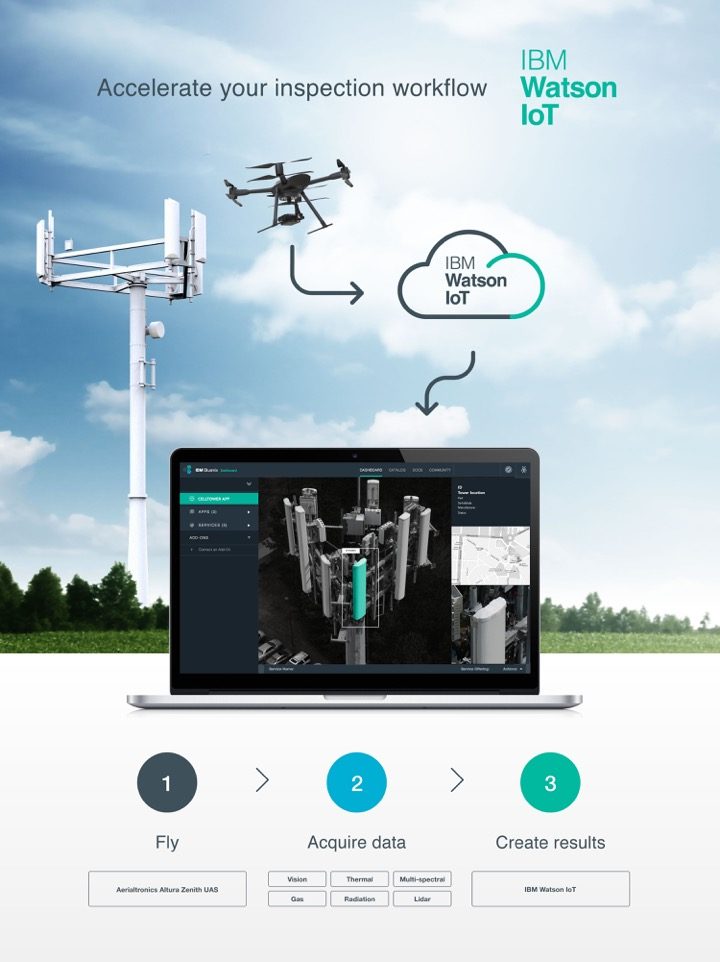The Perfect Match
 As the drone industry matures, drone manufacturers rush to partner with other technology companies: leveraging new products in order to provide more functionality, new solutions, or an entree into a new vertical. These 5 recent partnerships could provide their players with a critical edge in the industry, and up the pace of development on new technologies for drones.
As the drone industry matures, drone manufacturers rush to partner with other technology companies: leveraging new products in order to provide more functionality, new solutions, or an entree into a new vertical. These 5 recent partnerships could provide their players with a critical edge in the industry, and up the pace of development on new technologies for drones.
- DJI and Epson. Drone manufacturing giant DJI announced a partnership with Epson, providers of the Moverio® augmented reality (AR) smart eyewear platform, earlier this month. The companies will leverage the partnership to “create new solutions for the Epson Moverio smart glasses.” DJI will optimize the DJI GO app for the Epson Moverio smart glasses, allowing pilots to see first person views (FPV) from the drone camera while maintaining line of site with the drone. They expect the new product to start shipping late Q4 2016.
- Parrot and Canonical. Drone manufacturer Parrot has partnered with Canonical, the company behind the operating system Ubuntu, to create a “drone development kit.” The “S.L.A.M.,” short for “Simultaneous Location and Mapping” kit rides on a drone to provide autonomous navigation capabilities. Parrot has created a module that can be attached to any drone containing processors and sensors, including an NVIDIA processor, 1500×1500 fish-eye stereo camera, an Inertial Measurement Unit (IMU), an ultrasound sensor, a magnetometer, and a barometer.
- Yuneec and Intel. The partnership between Yuneec and Intel began last year, with Intel making heavy investment in the Chinese manufacturer. But the first product collaboration was announced this year, pairing Yuneec’s Typhoon drone with Intel’s RealSense camera in order to provide intelligent obstacle avoidance. With obstacle avoidance emerging as a differentiating technology, Yuneec’s partnership with Intel could be far more valuable to them than the pure investment.
- Aerialtronics and IBM. Netherlands-based commercial drone manufacturer Aerialtronics, specializing in inspection services, announced a partnership with IBM to produce “the first commercial drones featuring cognitive computing capabilities from the IBM Watson Internet of Things (IoT) Platform on IBM Cloud.” The partnership says that drone operators, using “high definition cameras and Watson Visual Recognition APIs” can get a 360-degree, high resolution overview. Sending the images to the IBM Watson IoT Platform to be analyzed in near real-time will give operators immediate actionable information.
- Qualcomm and AT&T. While neither is a traditional drone company, the partnership between Qualcomm and AT&T to test drones on cellular networks could be a game changer for the entire industry. The two companies are testing drone operation on commercial 4G LTE networks, which could significantly impact the corporate use of drones. They’ll be looking at coverage, signal strength, and mobility: one of the goals is to identify the development needed to allow flight beyond visual line of sight (BVLOS.)”Many of the anticipated benefits of drones, including delivery, inspections and search and rescue, will require a highly secure and reliable connection,” Chris Penrose, senior vice president of IoT solutions with AT&T, said in a statement. “With a focus on both regulatory and commercial needs, LTE connectivity has the potential to deliver optimal flight plans, transmit flight clearances, track drone location and adjust flight routes in near real-time. Solving for the connectivity challenges of complex flight operations is an essential first step to enabling how drones will work in the future.”
New partnerships are happening every day. As the industry – and the technology – develops, smart manufacturers are looking for partnerships that give their offering an edge. These pairings between drone companies and other technologies are just the tip of the iceberg as the applications for commercial drones expand.
http://dronelife.com/2016/10/04/perfect-match-5-recent-drone-industry-partnerships-watch/